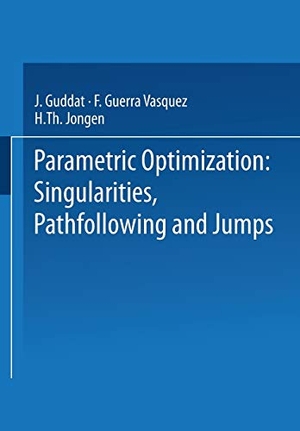Für statistische Zwecke und um bestmögliche Funktionalität zu bieten, speichert diese Website Cookies auf Ihrem Gerät. Das Speichern von Cookies kann in den Browser-Einstellungen deaktiviert werden. Wenn Sie die Website weiter nutzen, stimmen Sie der Verwendung von Cookies zu.
Cookie akzeptieren
J. Guddat / H. Th. Jongen / F. Guerra Vazquez
Parametric Optimization: Singularities, Pathfollowing and Jumps
- Vieweg+Teubner Verlag
- 1990
- Taschenbuch
- 200 Seiten
- ISBN 9783519021124
This volume is intended for readers who, whether they be mathematicians, workers in other fields or students, are familiar with the basic approaches and methods of mathematical optimization. The subject matter is concerned with optimization problems in which some or all of the individual data involved depend on one parameter. Such problems are called one-parametric optimization problems. Solution algorithms for such problems are of interest for several reasons. We consider here mainly applications of solution algorithms for one- parametric optimization problems in the following fields: (i) globally convergent algorithms for nonlinear, in particular non-convex, optimization problems, (ii) global optimization, (iii) multi-objective optimization. The main tool for
Mehr
Weniger
zzgl. Versand
in Kürze